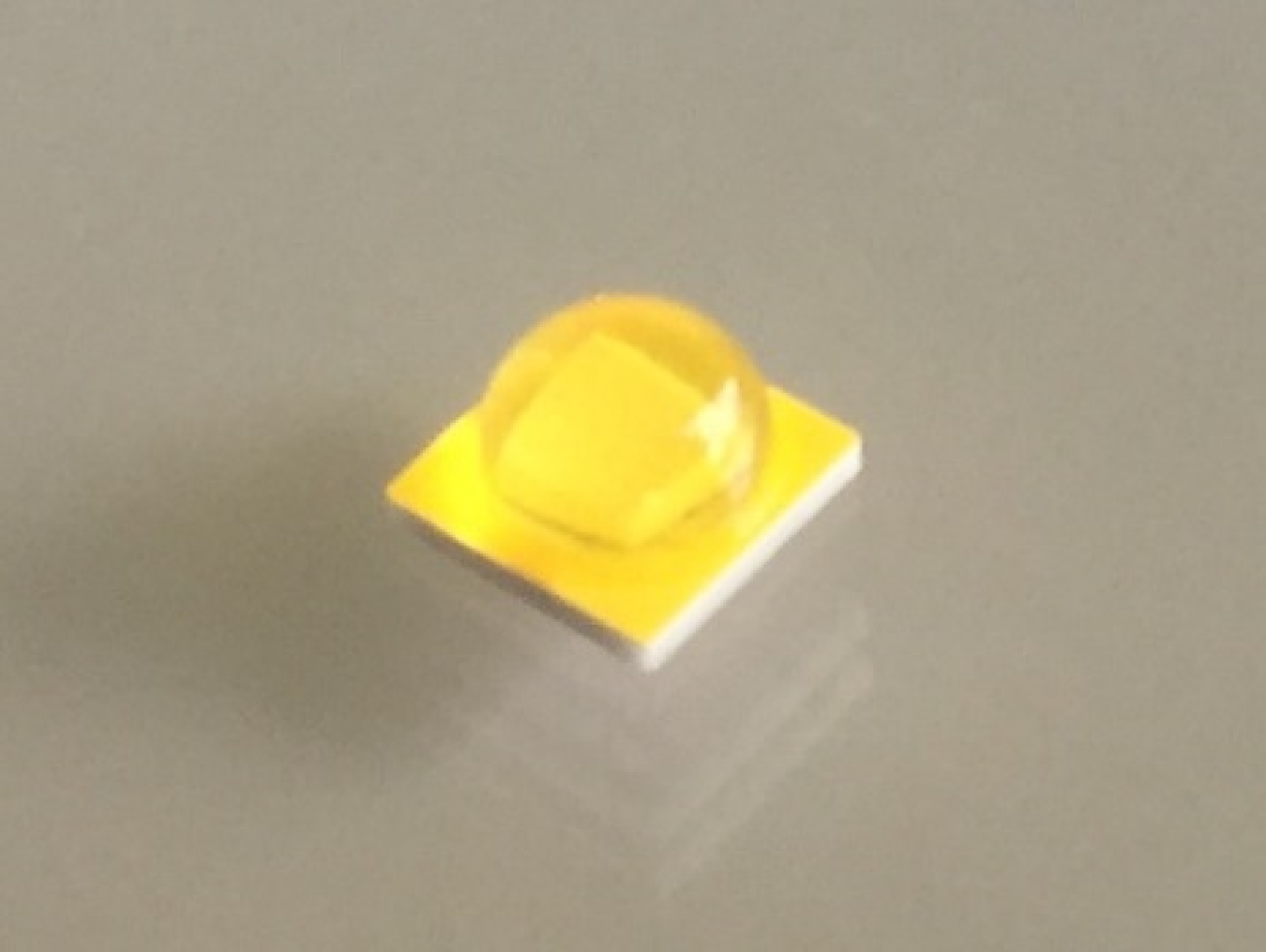
Prototype high-power LED sample showing an efficacy of 175 lm/W with a CCT of 4000K and a CRI of 70, at a junction temperature of 85° C and a current density of 35 A/cm2.
With the help of DOE funding, Lumileds is developing a high-efficacy, high-power LED emitter to enable the best possible luminaire performance in the high-brightness application space. The LED is being optimized for high drive current, high temperature operation, and a well-defined radiation profile. Efficacy improvements are being enabled by an integrated development effort, with improvements in each of the technology elements of the LED architecture.
Substrate and epitaxy are based on a patterned sapphire substrate flip-chip (PSS-FC) architecture, with improved external quantum efficiency and extraction efficiency in interaction with the other architecture elements. Die development includes the development of a contact design that increases reflectivity with minimal if any penalties on forward voltage and thermal performance. Phosphor development is focusing on phosphors with reduced bandwidth to increase the luminous efficacy of radiation while maintaining high quantum efficiency. Package development is focusing on optical materials that maximize light extraction from the PSS-FC die in a radiation profile optimized for directional applications.
The goal is to achieve an efficacy of 200 lm/W in a high-power white LED package at a CCT of 4000K and CRI >70 (representative of outdoor and industrial applications), a junction temperature of 85° C and a current density of 35 A/cm2. The LED will have excellent color-over-angle uniformity, reduced current droop, and improved thermal performance to enable optimal luminaire efficacy and cost under actual application conditions. At this point, Lumileds has developed a high-brightness LED with an efficacy of 175 lm/W under the conditions listed above. (July 2017)
Return to Research Highlights.

